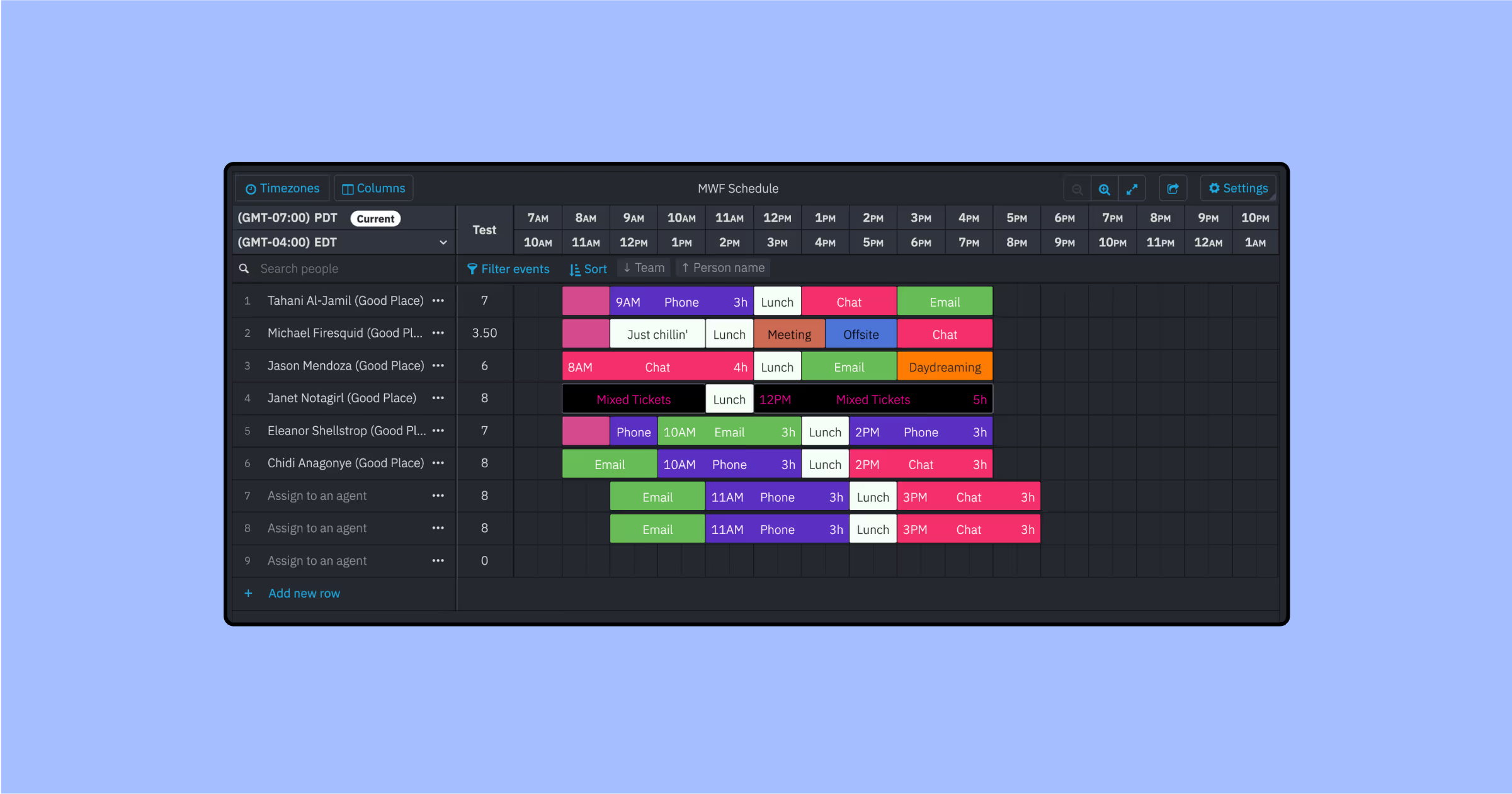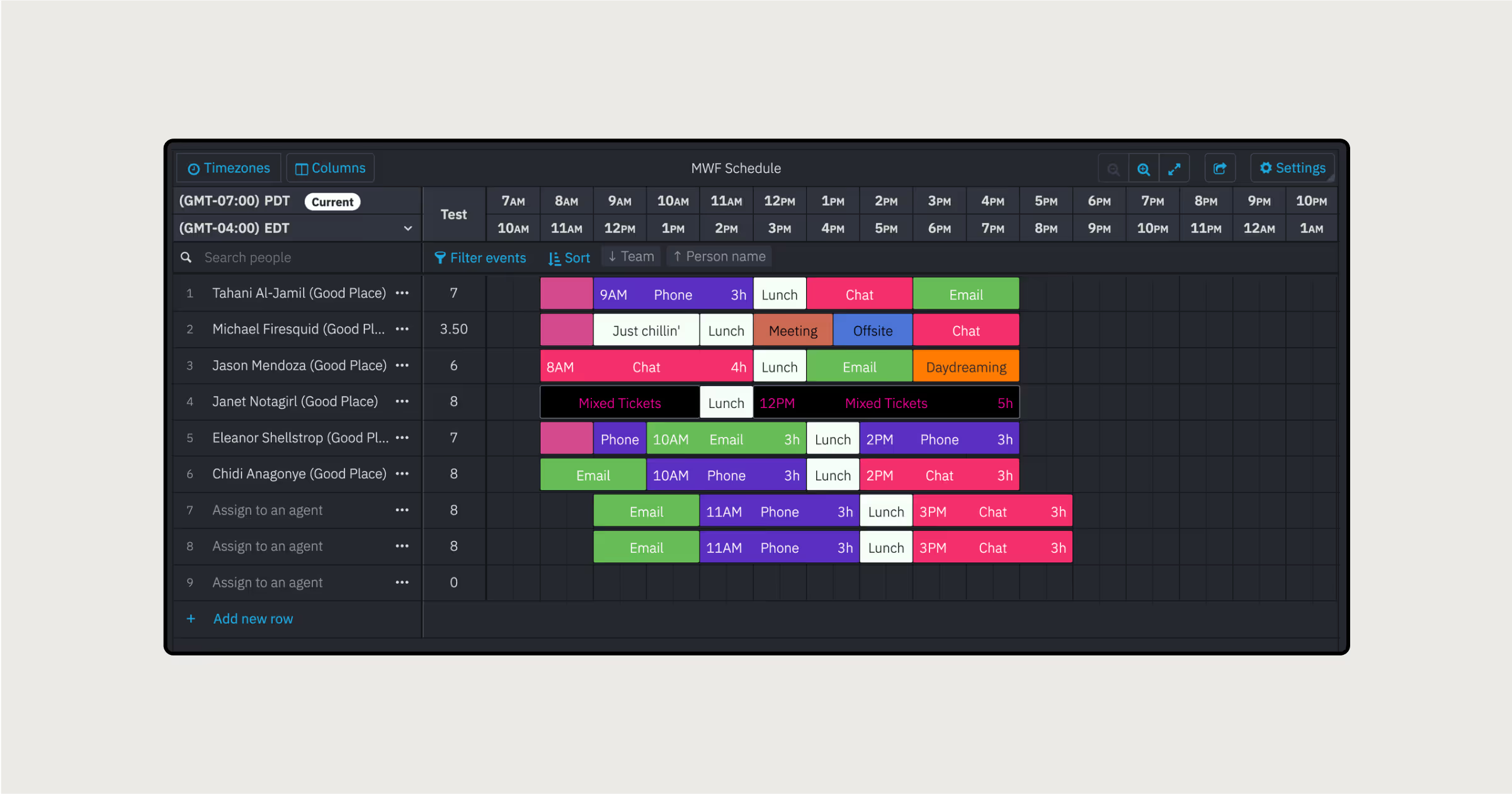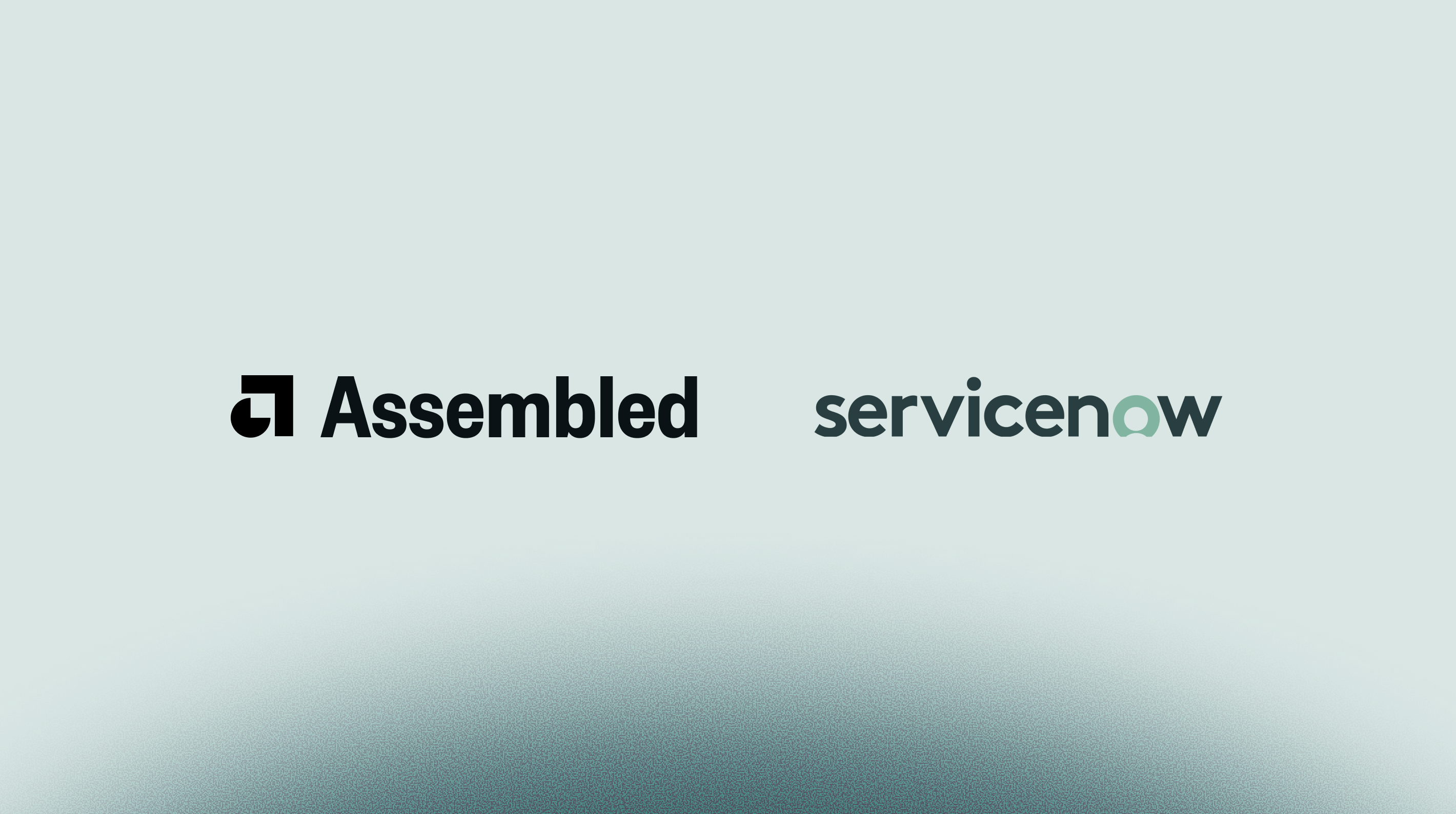Schedule more efficiently at scale with these time-saving updates

For every CX team, there comes a point when things feel difficult to control. Scheduling hundreds of agents in an efficient but also equitable way? Forget it. Making sure you’re not overstaffed before it happens? Impossible. Having time to think more proactively about your workforce management strategy? No way. Feeling confident that your schedules are designed to meet SLAs? Keep dreaming.
We call this the Zone of Exponential Complexity, a stage that was always guaranteed to zap the morale and productivity of everyone from workforce managers to real-time analysts (RTAs) and schedulers to CX leaders. For years, CX teams have settled for planning experiences that have lacked flexibility and control from end to end. Those days are over, thanks to a series of massive enhancements we’ve made to the planning experience in Assembled. Read on to learn more about these new features, and why they’re critical while teams are in the Zone…
Better scheduling, created by and for our customers
We’ve worked with hundreds of customers that have gone from zero to 100 (or 1000+!) agents overnight. And if there’s one thing they’ve all had in common (aside from a culture of excellent customer support, of course), it’s been the need for flexible planning capabilities that offer team-wide visibility. Our best insights come from the teams who use Assembled, so we asked our fastest-growing customers to describe the planning experience of their dreams — and then we got to work making them a reality.
Create more flexible schedules with Open Shifts

Whether you’re planning for 2 weeks into the future or 2 months into the future, you can’t always know which agents are going to be available to schedule or what kinds of last-minute changes might throw things out of whack. To combat this uncertainty, many schedulers will add shifts to the schedule without assigning them to an agent. Then, agents will request the open shifts that work for them.
We know how important this level of flexibility is for our customers. That’s why we’ve updated our scheduling templates to be more adaptable (read: agent-agnostic). To get started with Open Shifts, create a new template or modify an existing one. Each new row you insert by clicking “Add new row” will not require you to assign an agent to the shift. This means your team can more easily facilitate shift swaps, apply and bid for shifts, and onboard or transition into new agent classes as it continues to grow.
“Using open shifts for templates has really improved my planning, scheduling, and productivity across the board. We regularly hire new staff to support increased customer demand, and using open shifts allows me to quickly assign workloads to new agents and save hours of time. With agents moving between teams, I can now seamlessly change future shifts for these agents in just a few minutes. What a game-changer!”
Tommy Milne, Real-Time Analyst at Capital on Tap
Model different scenarios with Test Schedules
.avif)
Don’t just build schedules — test them! Test Schedules helps you ensure optimal staffing levels by modeling different scenarios and their impact to your SLA. Simply apply events to the test schedule and make as many tweaks as you need to get it right — all while using the lightning-fast keyboard shortcuts you already know and love. Once you’re satisfied, you can smash that publish button and cross that item off your to-do list.
Sure, taking the time to project different staffing scenarios takes a little extra time. But ultimately, it’ll pay off in the long run by optimizing your resources so you’re not spending more on staffing than you need to. Read more about how to set these up here.
Make intraday changes with Schedule Change Requests

For managers and agents alike, more agent autonomy is a good thing. Let’s say one of your agents has a doctor’s appointment that gets scheduled the same time she’s supposed to work. What if, rather than having to notify her manager, she could request a change in her schedule herself, thus saving schedulers and RTAs from having to spend extra time making those adjustments? That was the thinking that brought Schedule Change Requests into existence.
Don’t worry, workforce managers — there are still guardrails in place. When a schedule change is requested, you can zoom out to see the implications of that change on net staffing before you approve it. This team-wide visibility is central to our philosophy of creating an environment in which everyone from agents to schedulers to managers has power. You can learn more here.
A flexible planning experience that empowers the entire team leads to happy agents, higher team retention, and two thumbs up from leadership: the golden trifecta of customer satisfaction. Support teams have spent long enough trudging through the Zone of Exponential Complexity. With the addition of Open Shifts, Test Schedules, and Schedule Change Requests, Assembled users can save time on the most menial schedule-creation tasks while providing more control and flexibility to everyone on the team.



.png)
